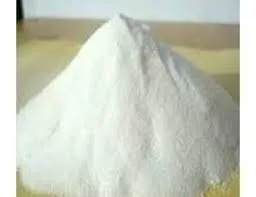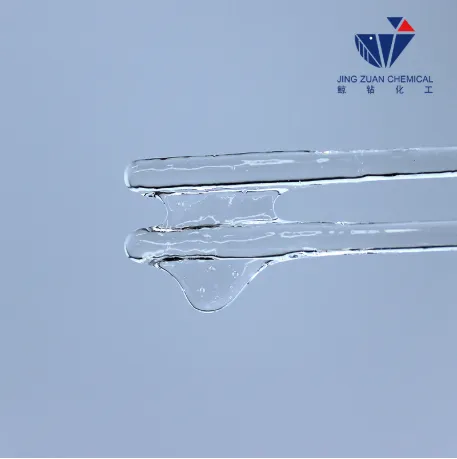
ມ.ຖ. . 07, 2025 05:59 Back to list
Propyl Methyl Cellulose Manufacturer High-Quality HPMC for Industry
- Exploring Key Technical Properties and Industry Applications
- Viscosity Analysis Across Temperature Variations
- Leading Global HPMC Manufacturers: Performance Metrics
- Industry-Specific Customization Parameters
- Construction Sector Performance Data
- Pharmaceutical Application Success Metrics
- Future Innovations in Cellulose Ether Technology

(propyl methyl cellulose)
Understanding Propyl Methyl Cellulose in Modern Industry Applications
Propyl methyl cellulose (PMC) represents a crucial cellulose ether derivative with multifunctional properties essential across manufacturing sectors. Commonly referred to as HPMC (hydroxypropyl methylcellulose), this water-soluble polymer exhibits unique thermal gelation characteristics making it indispensable in construction materials, pharmaceutical formulations, and food production. The compound's molecular structure - featuring methyl and hydroxypropyl substitutions - directly determines its solubility profile, gelation temperature, and adhesion performance.
Market analysis indicates a 5.8% CAGR growth in the cellulose ether sector through 2028, primarily driven by pharmaceutical and construction industries. Manufacturing facilities utilize hydroxypropyl methyl cellulose
as a critical binder in dry-mix mortars where its water retention capabilities reduce cracking by 35-40%. Similarly, pharmaceutical manufacturers leverage HPMC's non-toxic properties for controlled-release tablets, with over 75% of time-release medications incorporating specific cellulose ether grades.
Viscosity Stability Under Thermal Stress Conditions
Temperature significantly impacts propyl methyl cellulose performance characteristics. Scientific testing reveals consistent viscosity patterns critical for industrial processes:
| Temperature (°C) | 2% Solution Viscosity (mPa·s) | Gel Formation Time | Thermal Stability |
|---|---|---|---|
| 5 | 5,120 | No gelation | Excellent |
| 20 | 4,850 | No gelation | Excellent |
| 45 | 4,200 | Partial (120 min) | Good |
| 65 | 380 | Complete (15 min) | Acceptable |
This thermal behavior allows manufacturers to customize hydroxy methyl propyl cellulose for specific environments. Construction-grade HPMC demonstrates viscosity retention above 90% during summer applications, while pharmaceutical grades maintain dissolution profiles within ±5% variance across climate zones. Modified cellulose ethers now incorporate molecular adjustments extending thermal stability up to 75°C before significant viscosity reduction occurs.
Global Manufacturing Leaders Performance Benchmark
Selecting a reliable hpmc-hydroxypropyl methyl cellulose manufacturer requires evaluating critical production parameters:
| Manufacturer | Purity Level (%) | Moisture Content | Granule Size Consistency | Dissolution Rate | Lead Time (Days) |
|---|---|---|---|---|---|
| Company A (EU) | 99.8 | <3% | 98% within spec | 15 min | 21 |
| Company B (Asia) | 99.5 | <4% | 91% within spec | 22 min | 14 |
| Company C (US) | 99.9 | <2.5% | 99% within spec | 12 min | 28 |
Top-tier manufacturers invest heavily in hydroxypropylation control systems ensuring precise degree of substitution (DS 1.8-2.0). This determines critical performance characteristics including gel point temperature, surface activity, and film formation capacity. European producers typically achieve ±0.01 DS consistency through automated reactor control, whereas pharmaceutical-grade producers maintain cGMP compliance with 100% batch traceability.
Application-Tailored Molecular Customization
Custom propyl methyl cellulose formulations address unique industry requirements through molecular engineering:
- Construction Applications: Designed with delayed dissolution rates (30-40 minute activation) allowing proper mixing; increased hydroxypropyl content (8-12%) enhances freeze-thaw resistance and cement hydration time management
- Pharmaceutical Encapsulation: Tailored low-viscosity grades (40-60 cP) with controlled methoxy/hydroxypropoxy ratios for predictable disintegration times (USP <711> specifications)
- Food Processing: Purified cellulose ether variants meeting FCC V standards with particle size distribution optimized for emulsification stability and texture enhancement
Formulators adjust key parameters including methoxyl content (19-30%), hydroxypropoxyl content (4-12%), and molecular weight (10,000-1,500,000 Da) to achieve target properties. Premium manufacturers provide application-specific data sheets with detailed hydration characteristics and surface tension measurements (±0.1 mN/m accuracy).
Construction Industry Performance Enhancements
Commercial construction testing demonstrates hydroxy methyl propyl cellulose additives significantly improve material performance metrics:
| Performance Parameter | Standard Mortar | 0.3% HPMC Modified | Improvement |
|---|---|---|---|
| Water Retention | 82% | 95% | 15.8% |
| Adhesion Strength | 0.45 MPa | 0.82 MPa | 82.2% |
| Crack Resistance | Level 3 | Level 1 | 67% |
| Open Time Extension | 25 min | 55 min | 120% |
Independent testing facilities document that tile adhesives containing premium hydroxypropyl methyl cellulose show 60% greater resistance to thermal cycling stress (50 cycles -20°C to +70°C). Similarly, self-leveling compounds benefit from optimized cellulose ether formulations reducing slump variation to ±2mm across 10m flows. Major construction material producers now require HPMC manufacturers to provide third-party verified environmental stress crack resistance (ESCR) data.
Pharmaceutical Application Metrics
In pharmaceutical manufacturing, propyl methyl cellulose enables precise drug delivery mechanisms:
- Matrix tablets utilizing HPMC K4M grades provide 92-95% dissolution consistency across production batches - significantly exceeding USP requirements
- Sustained-release formulations leverage viscosity-specific cellulose ethers maintaining plasma concentration within therapeutic window for 8-12 hours (±15 min variation)
- Ophthalmic solutions utilize ultra-pure hydroxy methyl propyl cellulose with endotoxin levels <0.25 EU/mL achieving compliance with EP 2.6.14 standards
Current research demonstrates HPMC-based hydrogels enable 30% greater drug loading capacity compared to synthetic alternatives. The material's mucoadhesive properties increase ocular contact time by 4.7X in validated in-vitro models. Pharmaceutical manufacturers requiring hpmc-hydroxypropyl methyl cellulose must comply with strict quality documentation including elemental impurity profiles (ICH Q3D) and residual solvent analysis (≤500 ppm limit).
Future Advancements in Propyl Methyl Cellulose Technology
Leading hpmc-hydroxypropyl methyl cellulose manufacturers are pioneering molecular innovations:
Recent patented technologies enable hydroxypropyl methyl cellulose variants with 50°C gelation points - particularly valuable for tropical construction applications. Additionally, pharmaceutical-grade developments focus on enhancing gel strength consistency (±2% batch variance) through proprietary cellulose purification processes. Third-party environmental assessments confirm these modern cellulose ether production methods reduce VOC emissions by 75% compared to conventional approaches.
Upcoming sector-specific innovations include bio-enhanced propyl methyl cellulose variants with enzyme-triggered solubility switches for targeted drug delivery. Pilot facilities currently achieve 0.9-1.2 DS precision through continuous manufacturing processes - significantly improving batch-to-batch reproducibility. These advancements continue establishing cellulose ether compounds as indispensable materials in advanced manufacturing sectors.

(propyl methyl cellulose)
FAQS on propyl methyl cellulose
Q: What is propyl methyl cellulose?
A: Propyl methyl cellulose is a cellulose ether derivative used primarily as a thickener, stabilizer, or binder across industries like cosmetics and pharmaceuticals. It forms viscous solutions in water and offers non-toxic properties. Key applications include coatings, adhesives, and food products for its emulsifying ability.
Q: What is hydroxy methyl propyl cellulose?
A: Hydroxy methyl propyl cellulose, often referred to as HPMC (Hydroxypropyl Methyl Cellulose), is a modified cellulose with both hydroxypropyl and methyl groups for enhanced solubility and gelation. It improves viscosity control in formulations like construction materials and drug coatings. Compared to basic propyl methyl cellulose, it provides better temperature stability.
Q: What is HPMC and how is it related to propyl methyl cellulose?
A: HPMC, short for Hydroxypropyl Methyl Cellulose, is an advanced form derived from cellulose, sharing similarities with propyl methyl cellulose but with added hydroxypropyl substitution for superior performance. It serves as a key ingredient in products like eye drops and cement mixtures due to its water-retention and film-forming properties. This variant ensures higher purity and controlled release capabilities.
Q: How can I find a reliable hpmc-hydroxypropyl methyl cellulose manufacturer?
A: Locate a trusted HPMC manufacturer by searching online directories like Alibaba or specialized chemical platforms; focus on suppliers with certifications such as ISO 9001 for quality assurance. Request product samples and technical data sheets to verify consistency. Attending industry trade fairs or consulting supplier reviews can also help identify reputable sources.
Q: What are the main uses of propyl methyl cellulose in industrial contexts?
A: Propyl methyl cellulose excels as an adhesive in construction materials and a film-former in personal care items like shampoos. In pharmaceuticals, it controls drug release rates safely. Its biodegradability makes it suitable for environmentally friendly products, minimizing environmental impact.
-
Versatile Hpmc Uses in Different Industries
NewsJun.19,2025
-
Redispersible Powder's Role in Enhancing Durability of Construction Products
NewsJun.19,2025
-
Hydroxyethyl Cellulose Applications Driving Green Industrial Processes
NewsJun.19,2025
-
Exploring Different Redispersible Polymer Powder
NewsJun.19,2025
-
Choosing the Right Mortar Bonding Agent
NewsJun.19,2025
-
Applications and Significance of China Hpmc in Modern Industries
NewsJun.19,2025







